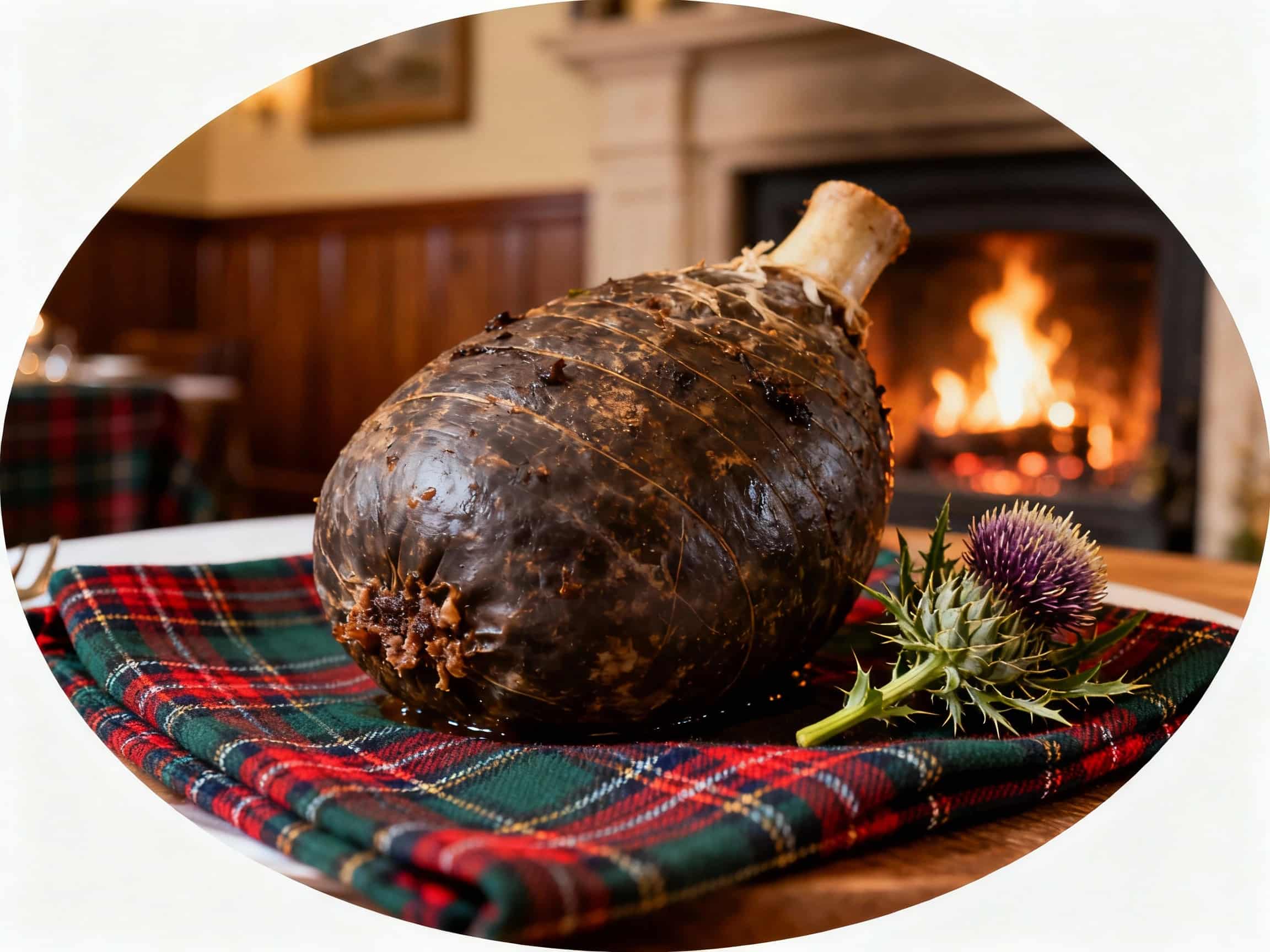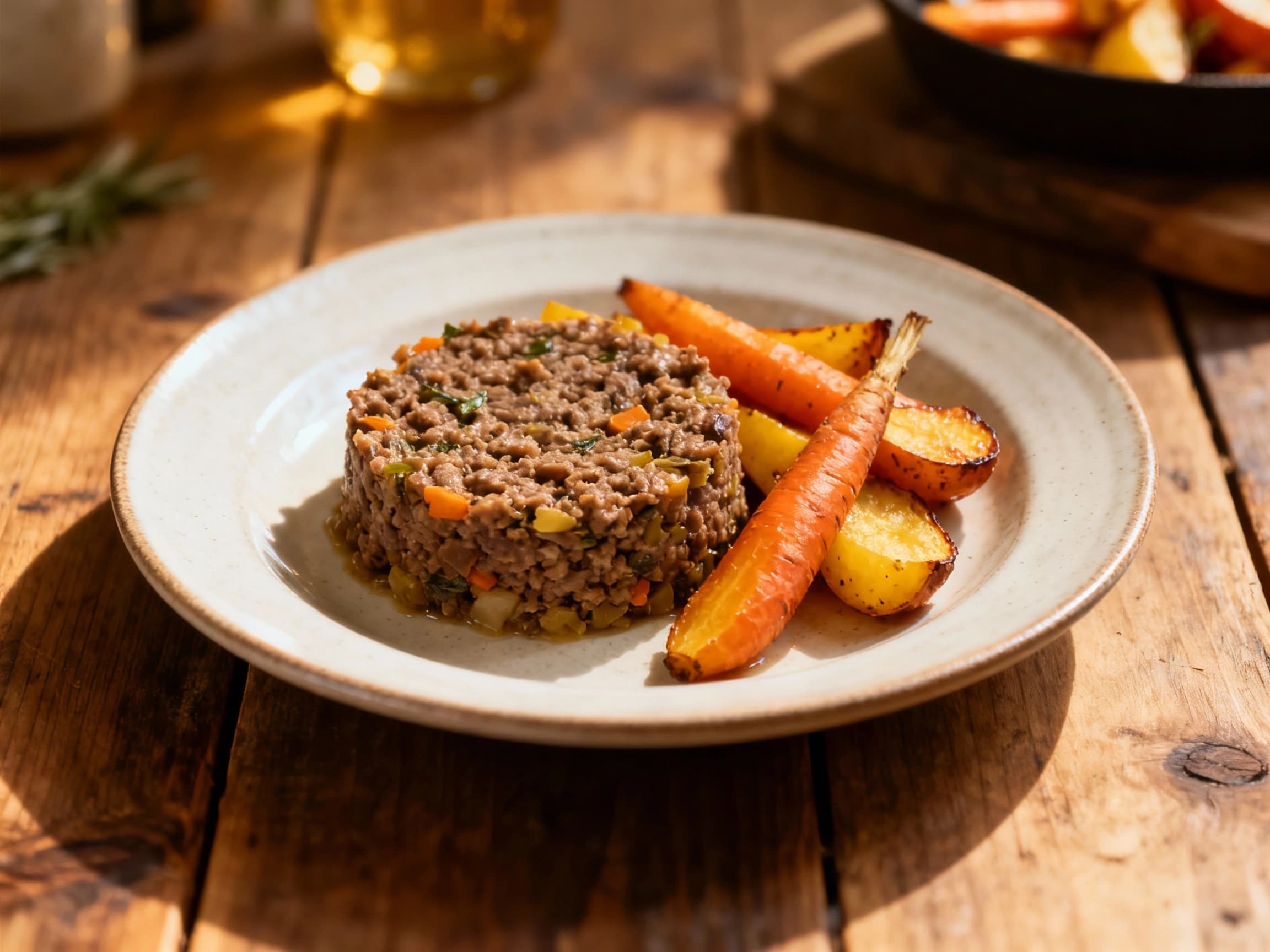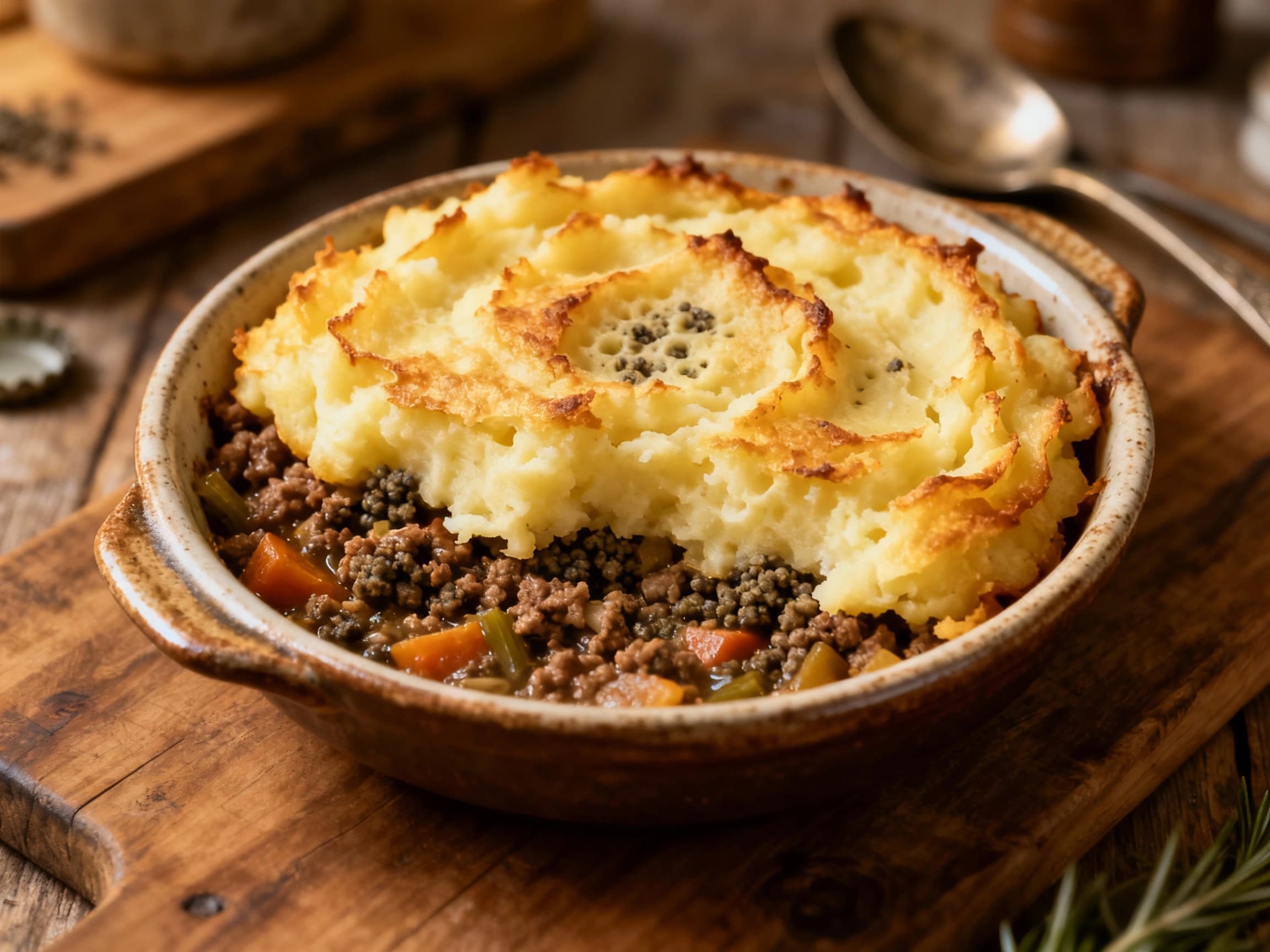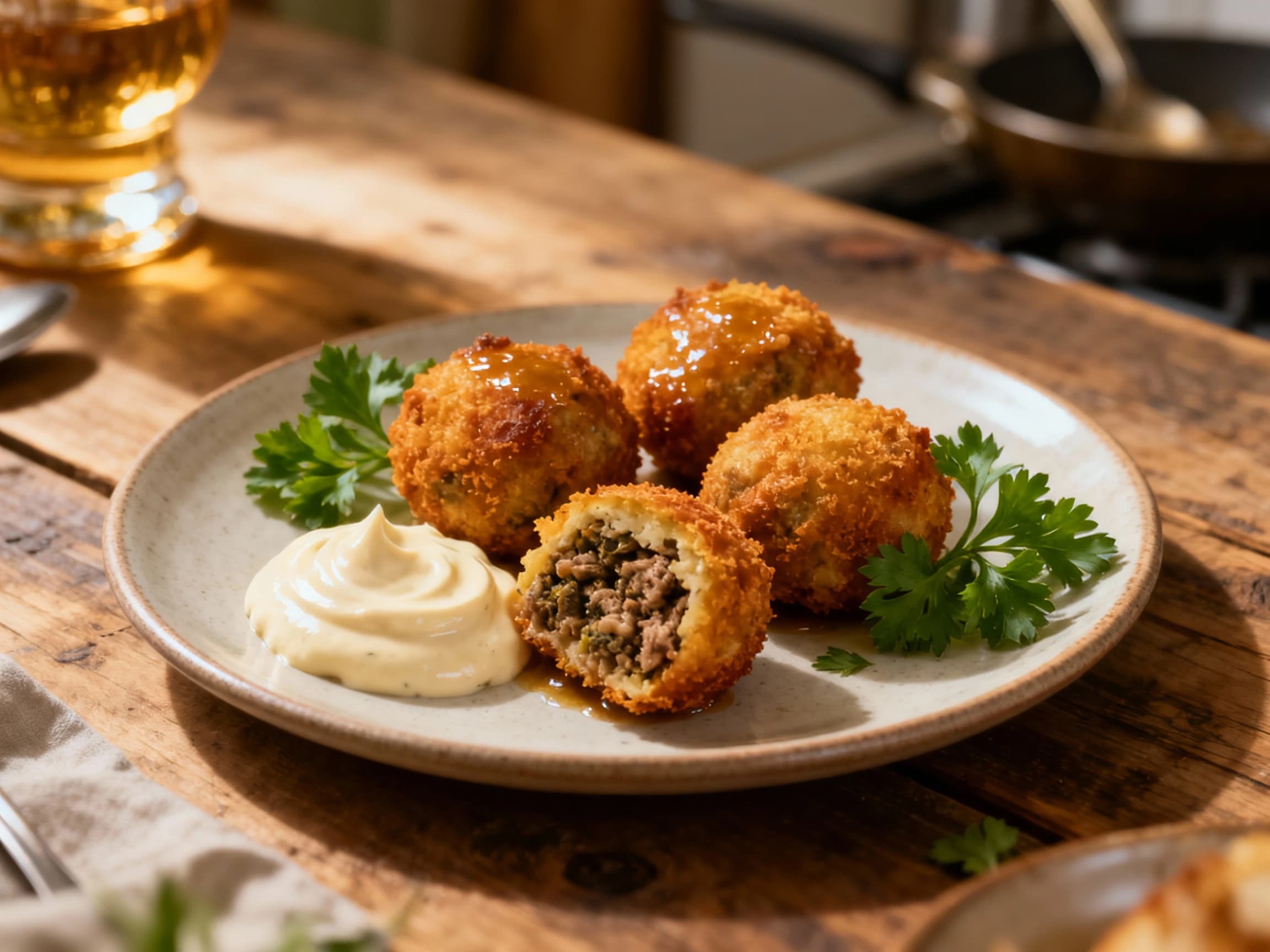
Haggis
Haggis
- Country
- United Kingdom
- Region
- Scotland
- Recipes
- 3 Recipes
Dish information
Haggis, the national dish of Scotland, is a deeply traditional and celebrated food with a rich history dating back possibly to the 14th century, though its modern form likely solidified later. Its origins are intrinsically linked to the rugged landscape and the necessity of utilizing every part of a slaughtered animal. Traditionally, the poorer Highland communities made use of the sheep's pluck (heart, liver, and lungs), which were often less valuable parts. These were minced with oatmeal, onions, suet, and spices, then encased in the sheep's stomach and boiled. This method of preparation allowed for a nutritious and filling meal that could be prepared and stored relatively easily. The earliest written mention of haggis appears in an English household book in 1430. It became a staple for shepherds and farmers, hence its name, which some attribute to the Gaelic word 'haggis' meaning, roughly, 'seasoned mince.' The dish gained significant cultural prominence, particularly through the works of Robert Burns, who eloquently praised it in his famous poem 'Address to a Haggis' in 1787. This poem is traditionally recited before haggis is served at Burns Suppers held on or around his birthday, January 25th, solidifying its place in Scottish celebrations and identity. Modern haggis is often made in artificial casings, but the traditional method remains highly valued for its authenticity.
Timeline
First known written record of haggis.
Robert Burns recites his famous poem 'Address to a Haggis'.
The first official Burns Supper featuring haggis is widely celebrated.
Modern production methods increase haggis availability.


